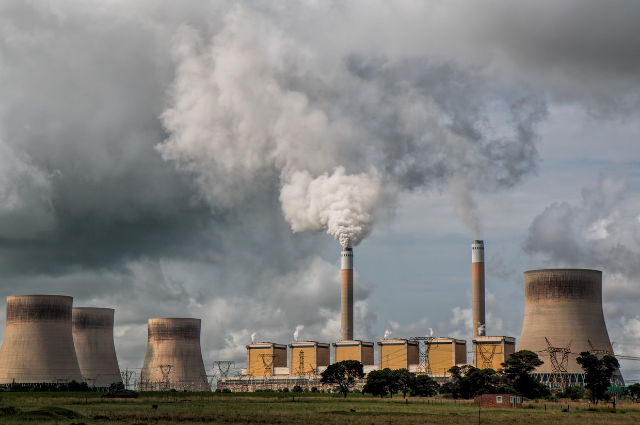
The socio-economic geography of fossil fuel addiction is a complex and in-depth interview topic that crosses only the consumption of coal, oil, and natural gas. It is an incident contained in economic, political, environmental, and social structures that has evolved over centuries, and forms the global and regional development path. Fossil fuels are the spine of modern industrialization, powering economies, urbanization facilities, and changing societies. However, he also has a built-in systemic lock-in that changes challenging and different alternatives in different geographical areas.
A living example of such addiction can be seen in areas such as the Appalachian Coalfields and the Middle East, and the Russian oil-rich regions in the United States. These regions describe the "economic geography" of fossil fuels: the entire local economy and labor markets are based on recovery, processing, and distribution industries. For example, Campbell County is in Wyoming, a prominent coal producer, with a significant vulnerability between its mono-industrial economic basis and low diversification geography is called a "resource-dependent" region. These regions often find that the "Dutch disease" is known, where the dominance of the resource areas increases the value, reduces competition to other economic sectors, and strengthens the dependence on the export of fossil fuels. Social results are highlighted: Inequality with high income, limited educational opportunities, and vulnerability to economic shocks from ups and downs in commodity prices. Russia imitates social challenges, with some inequalities in the world associated with the monopoly structure of the oil and gas sector, where money and political power are concentrated in a small aristocratic class, which means that many Indian areas are economically and politically marginalized.
Fossil fuel addiction is also complicated in global geopolitical stability. Fossils rich in fuel drift reserves have a major impact on the world scene, but they also provide instability. Oil prices are increasing, struggling with resource control and economic instability, creating a waterfall of social and political consequences. Think of the Republic of Congo, where the surplus of oil is formed about half of GDP, resulting in a delicate economy that is receptive to external value shocks. On the other hand, various economies such as the Los Angeles region in the United States are more flexible for these quakes due to extensive economic bases. These inequalities emphasize the uneven socio-economic effects of fossil fuel addiction even within national boundaries and emphasize the need for sensitive expected infections for local references.
In addition to economic and political factors, the environmental and health effects of fossil fuel addictions have serious social costs. Combustion of fossil fuel releases contaminants that reduce air quality, causing less income to respiratory and heart disease, and unevenly affects minority communities. The spread of oil causes damage to the ecosystem due to water pollution and the operation of water, and threatens the supply of drinking water. The extraction process prevents houses and landscapes, and increases the loss of biodiversity. This environmental impact represents a form of social environmental injustice, where groups of the margins bear the main pollution and health effects, which exacerbates their economic weaknesses.
Away from this tangled fossil fuel addiction, the transition is not only the necessary technological innovation, but also socio-economic restructuring. Renewable energy sources such as alternatives – sun, wind, hydropower, and biomass – are faster than both economic and environmental approaches. Countries such as Iceland and Costa Rica provide an example of this change, where Iceland has produced more than 85% of its energy from geothermal and hydropower, and Costa Rica works with about 100% renewable power during an extended period. These infections include local energy production, energy security, and pollution reduction. Nevertheless, the change is uneven due to uneven resource settlement, institutional capacity, and financial inheritance.
Technically, many of these renewable technologies use natural processes: Solar panels convert photons to electricity, wind turbines use aerodynamics to generate electricity, and geothermal systems tap into the earth’s internal heat. More innovative approaches blend biotechnology and energy production, such as biophotolysis, which uses photosynthetic organisms to produce hydrogen fuel. To use hydrogen as an energy source continuously produced through electrolysis operated by biomass gasification or renewable energy, promises a small carbon alternative for difficult areas for electrification, such as heavy transport and industrial processing. However, challenges in storage, infrastructure, and scale require coordinated policy and investment efforts.
In socio-economic terms, changes in options provide opportunities for new industries and employment generation, but there is also a risk of fossil fuel-dependent communities. Kern County, California, a large oil producer with economic challenges and lower educational levels, highlights the need for an infection political framework that supports the worker, to achieve financial diversification and social security trap. It is important that energy infections do not increase social inequalities or geographical inequalities, but rather promote inclusive growth.
To conclude, the socio-economic geography of fossil fuel addiction is a history of historical entrance, economic opportunity, political power, social inequality, and environmental loss. Fossil fuel options, detergents, promising more durable futures, technical sophistication, transformational policy, and inclusive strategies require being sensitive to site-based realities. When global society moves towards emissions of clean zero emissions, it is necessary to understand these layered geographical regions to navigate the path to a flexible, fair energy from fossil fuel addiction to the future.
. . .
References:
